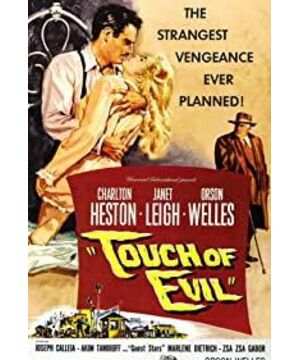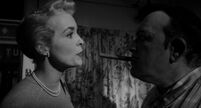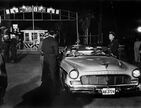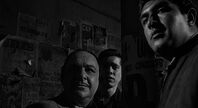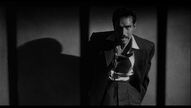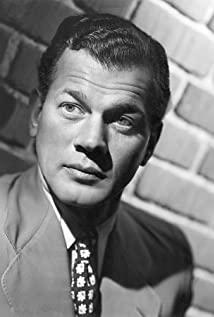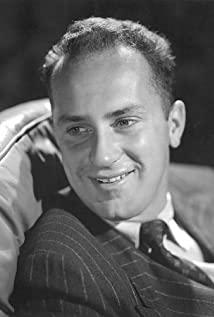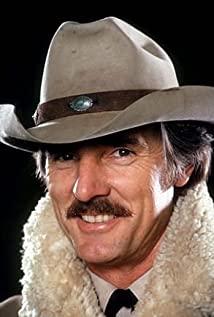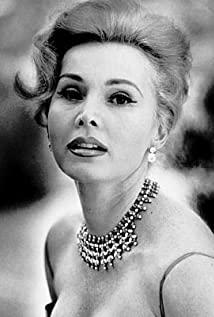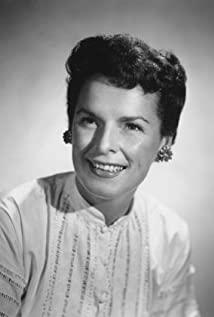"Lady in the Fall" is a classic directed by the film master Orson Wells, and it is also a representative film noir. Some film scholars even regard it as the final work of the classic film noir period. . Although the film did not arouse much attention when it was released that year, it became a hotly discussed work by film critics from all over the world.
When Bazin commented on Wells's "Macbeth" and "Othello", he once summarized the theme of the film as the "dual theme" of "Beauty and the Beast", that is, the crime was expressed sublimely and magnificently. Truffaut said that Bazin’s comment seemed to be directed at "Gone with the Tribulation." Indeed, "Gone with the Tribulation" has written Inspector Quinlan, who is aging and obese, who is unscrupulous in order to determine the case, as a tragic hero. At the same time, it discusses the legality of law enforcement and the fairness of the law.
In the film, Wells portrays a group of opposing characters, symbolizing law enforcement and the law respectively. Sheriff Quinlan represents the law enforcement authority with authority. He relies on his instinct to handle the case, is arbitrary and does not accept any doubt; in his view, the most important thing is to catch the criminal, in order to achieve this goal, he can use various methods; he despises legal procedures and insists on using his own authority and methods Investigate the case. Vargas is an absolute supporter of the law. As Wells said, he is a "dignified man with a classical humanistic tradition." He opposed the abuse of private power and insisted on the fairness of legal procedures. Although both punish evil and promote good, the two people walked completely different or even opposite paths. Although Quinlan does not pursue money, reputation, or self-interest, the most important thing is to achieve justice, but he does not hesitate to use illegal means for this purpose. Vargas is his opposite. He focuses on legal procedures and insists on using evidence to speak. Due to insufficient evidence, he does not agree to convict Sanchez immediately. In order to overthrow Quinlan, he also starts by looking for evidence. For him, the law itself is Sacred and inviolable.
But the opposition between the two people is not entirely clear. Although Quinlan was arbitrary, he handled the case efficiently. In the face of criminals who cannot be overcome by the regular procedures of the law, Quinlan's unconventional methods have played a role. Although he has no evidence, the end of the film passes through Schwartz's mouth, showing that Sanchez he suspects is indeed the murderer of the bombing. This result makes Quinlan's illegal behavior appear vague and ambiguous. From a legal point of view, Quinlan is guilty and deserves trial. But in the hearts of the audience, the verdict on Quinlan will not be so simple. In particular, when they learned of Quinlan’s wife’s experience, the audience became more understanding and tolerant of his behavior.
This state of ambiguity between good and evil is also manifested in Vargas. When Vargos learned that Susan was in danger, he showed a strong violent confrontation. Vargas collects Quinlan’s evidence by secretly recording, which is also an unconventional method. As Trüffer said, all this means "despicable and mediocre, defeating intuition and absolute justice", showing "moral dishonesty, impurity in fairness and justice."
It is this intertwining of good and evil, the contradiction of purpose and means, which adds to the complexity and weight of the film, and makes Quinlan's failure and death at the end of the film to bring multiple emotional reactions to the audience. Knowing that Quinlan had done something illegal, they would still feel pity for him. This ambiguous emotion undoubtedly adds a rich charm to the film, prompting the audience to remember and think.
As "the epitaph of film noir" (Lewis language), this film covers almost all the important visual elements in film noir. Not only that, it also innovated and developed the style of film noir, branding a clear Welsh mark on the film.
The director used a plaster plaza in Venice, California, to create the border town in the film. Neon shining streets, noisy bars, cold and run-down oil wells, rivers surrounded by garbage, etc., create a background environment that makes the film leave a strong visual impression on the audience from the beginning, dirty, dark, and noisy. Against this backdrop, the theme of law enforcement's depravity has been closer, more realistic, and more shocking, and a perfect response has been achieved between the two. The same effect as Zhijing is the actor's makeup. In this film, Wells personally played the role of the protagonist Quinlan. It should be said that Wells's performance level is by no means inferior to his directing skills. After his interpretation, the complexity of the role has been perfectly presented. However, the shaping of characters does not only rely on Wells's superb acting skills, makeup also plays an important role in it. As we all know, Wells is an actor who is particularly keen to "disguise" in the film. In "Beautiful Lady", he developed this "hobby" to the extreme. The Kunlan in the film is tall and bloated, and the facial features are squeezed together by fat and can't be distinguished from each other. The disabled right leg made him even more clumsy, and the whole figure looked like a blindly swollen monster, extremely ugly. This is also the first time Wells appeared in his own film with such an unbearable appearance. However, the purpose of makeup is to serve the characters, it makes the protagonist's self-willing and depraved psychology to be visualized. Under this huge and ugly skin, people seemed to see Quinlan's spurning of society and the system. His life stopped from the moment he was unable to save his wife. He is using his swelling body to block his heart from the outside world, and defends absolute justice with the cruelest posture. This correspondence between the heart and the appearance allows the complex emotions of the characters to be expressed vividly and vividly, and it really creates a pitiful and hateful image of the protagonist.
In the lighting of the film, Wells showed his magician skills. He made black and white dance on the screen, creating a colorful visual effect, and creatively using light for the expressionism of film noir. renew. Among them, the passage in which Quinlan murdered Uncle Qiao is the most representative. At the beginning of this paragraph, as soon as Quinlan walked into the room, he ordered Joe to turn off the light, and the whole room immediately plunged into darkness. However, the black "canvas" inspired Wells's rich imagination. With the help of the neon lights on the opposite side of the room, he composed a passionate symphony of light and shadow for this passage. Every time the neon is lit, it matches the rhythm of the character's mood changes, speech, and even every decisive action. Especially in the final fight, the out-of-control Quinlan forces Joe back into the darkness, and Joe flees to the light. However, the "light" of escape was only momentary, and Quinlan immediately chased him, and his large figure once again obscured the light source. Qiao tried to escape through the window, but was dragged down by Quinlan and fell to the ground, and the two fell into the darkness again. At this time, the neon lights flashed and went out, and the fierce battle between them also flashed out. The scenes where Susan is about to wake up are constantly interspersed. The light passed between the three people quickly, faster and faster. The nervous mood was also pushed to a climax between flashes. In the end, the strangled Joe fell completely into the darkness. However, Wells' magic is not over yet. After Quinlan killed and left, Susan woke up from a coma. When she opened her eyes, the flashing neon lights happened to shine on Uncle Qiao's protruding eyes and hideous face. As far as the degree of horror is concerned, this scene is comparable to any horror movie. The entire paragraph was also pushed to a climax in Susan's exclamation.
Wells has been experimenting with the visual expressiveness of the 18.5mm wide-angle lens in movies. In this film, the use of this technique is very prominent. From the beginning of the film, Wells used the characteristics of a wide-angle lens with a wide field of view and a long depth of field to maximize the noise and chaos of the border town. At the same time, he also combined the wide-angle lens with the motion of the camera to further improve the spatial expressiveness of the lens. The enlarged foreground and the visually infinitely extended background made the town look extraordinary from the beginning. In addition, the combination of wide-angle lens and low-angle shooting is also creative, which is an important magic weapon for emphasizing emotion in this film. Low-angle shooting makes the subject tilt toward the lens, creating an overwhelming sense of authority. The expansion effect of the wide-angle lens on the foreground even emphasizes the degree of oppression of this authority, producing a suffocating force. Take the scene of Quinlan’s debut in the film as an example. Under the combined effect of wide-angle and low-angle shooting, Quinlan's huge body protruding from the car seemed to be completely pounced on the audience. When he got up, this sense of oppression became stronger. In just a few seconds, Quinlan was the local authority, and even the message that he was a god-like figure was conveyed to the audience. The 18.5mm wide-angle lens, low-angle elevation shots, cramped and unstable close-ups of people, etc., make the film present a Baroque visual style as a whole, creating an exaggerated, cumbersome and oppressive atmosphere. The "Visual Baroque" is just a portrayal of the character's "Inner Baroque", which appropriately expresses the depression, depression and contradiction in the character's heart. In addition, the theme of Baroque art is trying to find a balance between angels and demons, tragedy and comedy. It is a dispute between two extreme forms, which fits perfectly with the theme of the film. The unity of expression and ideological theme makes the film more convincing and appealing as a whole.
The director's ability to control the scene scheduling is also the most appreciated part of the film. At the beginning of the film, it was a complicated long-shot segment that lasted more than three minutes. The shot begins with a close-up of a young man turning the time bomb knob. Immediately afterwards, there was a woman's laughter in the distance. The young man turned around vigilantly while avoiding the camera. In the picture, the host of the laughter and his male partner appeared. Then they turned into the aisle on the right and disappeared into the camera. The young man quickly ran in the same direction from the aisle on the other side, and the camera followed him all the time. When he came to a car, the young man put the activated bomb into the trunk of the car, and quickly fled before the men and women who had just appeared on the screen got into the car. At this time, the camera was raised, following the start of the car over the roof. After reaching the street, the camera slowly descended, and has been slowly moving backwards with the car in the noisy town on the border between Mexico and the United States. The car passes by pedestrians, hawkers, policemen directing traffic, and sheep. When the prosecutor Vargos and his wife Susan walked into the frame, the camera changed the target again and followed them closely. In the end, the motion camera stopped at the border crossing checkpoint between the two countries, and was fixed on the kiss between Vargas and Susan that was disturbed by the bomb. In this paragraph, the movement of the camera is extremely rich, including push and pull, horizontal movement, vertical lifting. In terms of scenes, it also covers complex scheduling from close-ups to long-term perspectives. However, there is no chaos in the whole paragraph. The location, environment, source and some main characters of the story are introduced to the audience one by one, and a bomb is used to draw the audience's emotions. In this way, the film firmly controlled the audience's vision and psychology from the beginning, and demonstrated Wells' talent and deep internal strength in scene management and atmosphere creation. This passage has also become one of the classic long shot examples in film history.
Finally, it needs to be mentioned that the "Lady in the Fall" we see now is not edited by Wells himself. When the film was released, the producer hurriedly edited it against Wells's intentions, so that the film ended without any attention. To this end, Wells worked hard and wrote a 58-page memo. He handed the memo to the senior executives of Universal, hoping to edit the film again. At the end of the memo, Wells's tone was almost pleading: "When closing this memo, I sincerely implore you to agree to edit the film in my way of editing, and I have put in many days of hard work in it." Due to consecutive box-office losses for several films, Wells ultimately did not get the support of the filmmakers, and the 58-page memo was reduced to a pile of waste paper. Until the 1990s, several Oscar-winning editors, Walter Musch and others, re-edited the "director's cut version" based on Orson Wells' memo. Compared with the films released that year, this version includes more than 50 major and minor changes. Nevertheless, it is difficult to say that this edition restored the director's true intentions. For Wells, this is a kind of sadness, and for the audience who admire him, it is a pity that can never be restored.
View more about Touch of Evil reviews


